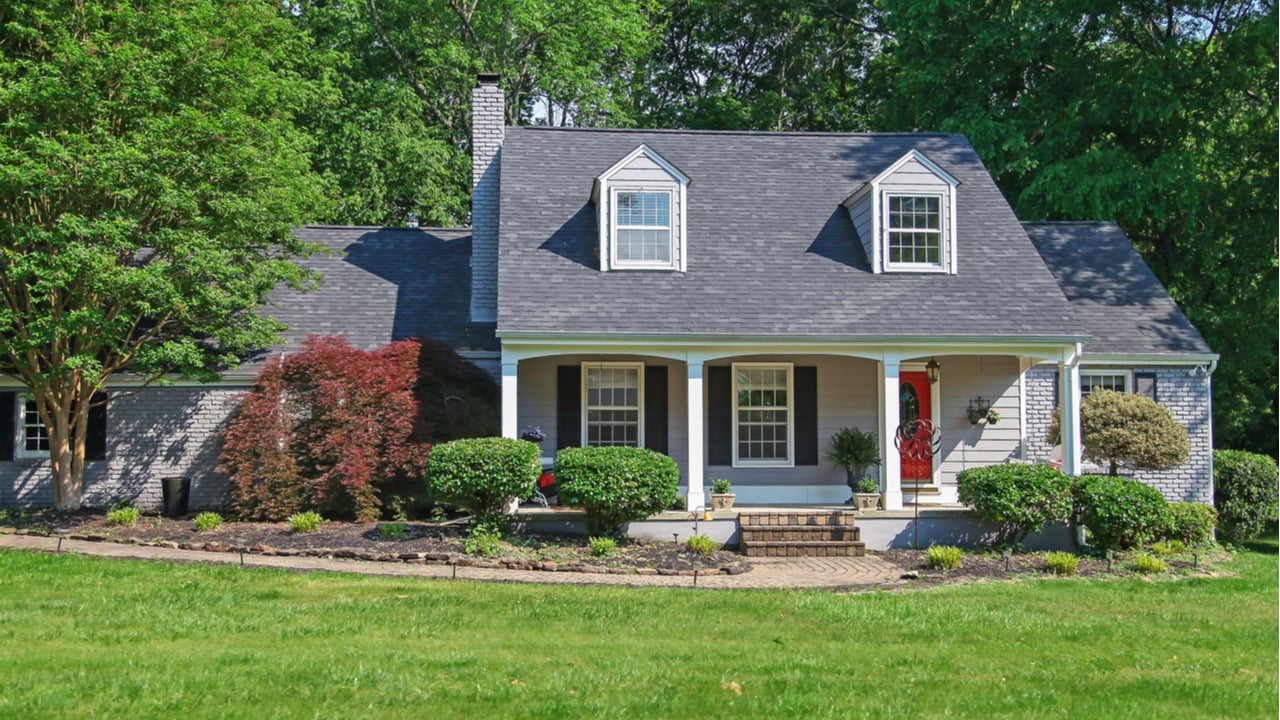What is a first-lien HELOC?




Key takeaways
- A first-lien HELOC merges a first mortgage with a variable-rate credit line, becoming the primary loan for the property.
- This type of HELOC can function as a cash flow management tool, automatically applying funds towards the HELOC balance every time income is deposited.
- First-lien HELOCs offer the benefit of accessing a larger pool of funds and can also function as a mortgage prepayment tool.
- However, they require strong finances to qualify and strong discipline to repay regularly.
You’re familiar with the HELOC (home equity line of credit): a way to use your home as collateral to access cash, almost like a credit card. But have you come across a first-lien HELOC? While they have been around for about 20 years, they’re less common and the twist they offer on the traditional HELOC is less well-known.
A first-lien HELOC essentially merges a regular first mortgage with a credit line, becoming your primary loan for the property. Also known as an open-end mortgage, it can not only be a source of funds, but also a cash-management tool and even a way to prepay your mortgage.
If you’re wondering whether a first-lien HELOC might be a good fit for you, let’s dive into what sets it apart and why it might be worth exploring.
How does a first-lien HELOC work?
A first-lien HELOC works similarly to a traditional HELOC: You borrow, using your home to back the debt. But unlike a conventional HELOC, which is a debt separate from your mortgage, a first-lien HELOC replaces your mortgage, becoming the primary loan on your property. That makes a big difference to creditors if you default on the loan. When it comes to repayments, traditional HELOCs sit in the “second position,” behind your primary mortgage. In contrast, a first-lien HELOC gets repaid first.
In terms of accessing funds, some first-lien HELOCs have specific draw periods, like their second-lien counterparts. But others — also known as “all-in-one mortgages” — allow you to continuously tap the equity in your home throughout the entire 30-year term. And also, to repay the HELOC at regular, advantageous intervals.
It typically works like this: You link a checking account to your first-lien HELOC. A “sweep” feature automatically applies funds to the HELOC balance. When you receive your paycheck, it automatically goes into your HELOC, reducing the balance. The strategy allows you to tackle paying down the principal every time you deposit your paycheck, saving you on interest.
“Every time you get paid or put money into the checking account, by default, that goes 100 percent towards the [mortgage] principal,” says Michael Crawford, Franklin, Tenn.-based mortgage loan officer at First Savings Bank. “Simply by living your life and getting paid as normal – bi-weekly or monthly or whatever – you’re always making payments towards your loan.”
In other words, you don’t have the usual fixed payment of principal and interest each month, as you do with a traditional mortgage. In fact, you don’t pay interest at a fixed rate at all. Instead, as is typical with home equity lines of credit, you pay at a variable rate. The first-lien HELOC loan calculates the interest using the previous month’s average daily principal balance.
“When you think about a one month cycle, all the money goes in, then you take out the money to pay your bills, and then whatever’s leftover, whatever you didn’t pull out from that income, is still in there,” says Anthony Rushing, sales manager and first-lien HELOC specialist at First Savings Bank based in Indiana. “That’s your principal paydown for that month.”
Mortgages vs. first-lien HELOCs
Traditional mortgage |
First-lien HELOC |
|
|---|---|---|
| Interest rate | fixed | fluctuating |
| Term length | up to 30 years | up to 30 years |
| Payment frequency | monthly | monthly |
| Repayments term schedule | amortizes | may have balloon payment |
| Cash source | no | yes |
| Required payment amount | same amount of principal + interest | Interest, required; principal, at borrower’s discretion |
First-lien HELOC benefits
So, who benefits from a first-lien HELOC? If you’ve got significant equity in your home, a first-lien HELOC allows you to access a larger pool of funds than a regular HELOC would. It’s somewhat akin to a cash-out refi, only simpler.
“If you worked hard and created a bunch of equity in your home and you want to have access to cash or home improvements, emergencies or other needs without having to refinance, you know, it’s just there for you,” says Chad Smith, president and chief operating officer of Better Mortgage, a provider of first-lien HELOCs.
A first-lien HELOC can also be a good option if you like having a financial hub through which all your income and expenses move.
“What you’re doing is running your cash flow through a home equity line of credit, which is a more efficient cash flow management tool,” says John Hatch, a senior loan officer at Edge Home Finance, a Minnesota-based mortgage broker, which offers first-lien HELOCs. “When you think about a checking account, it really gives you no benefits — just as a dumb holding tank, that’s all it is.
“But now, by using the HELOC, what happens is all of our income is working for us all the time. It’s paying down debt. It’s participating in the growth in the value of your house, etc. And then you can, if you want, refinance other debts into the first-lien HELOC,” he adds (an especially good strategy if they’re high-interest debts, like credit card balances).
The financial hub and the loan payment working together can also function as a mortgage prepayment strategy. “The HELOC is a two-way street,” says Logan Hertz, founder of Hazeltine, an Atlanta-based financial strategy firm, who often advises clients on products offered by lender 1st Lien HELOC. “If you have a mortgage, it would not be a good idea to dump your entire income into the mortgage because you can’t pull it back out. Whereas here, you can safely do that. So you end up paying the principal down a whole lot faster. Even though the interest rate may be higher, the interest you pay out of pocket ends up being substantially lower, and you pay it off substantially quicker.”
First-lien HELOC drawbacks
While a first-lien HELOC offers many advantages, it’s not suitable for everyone. One of the most significant risks is the temptation to borrow more than you need. Keep in mind: The average mortgage-holding homeowner has $207,000 in tappable equity at their fingertips, according to the latest ICE Mortgage Technology data. If you are not disciplined, this is not the right loan product for you.
“If you take out a first lien HELOC on your primary home, you’re going to have a very large percentage of your home’s equity available to you immediately,” says Hertz. “So you need to be the sort of person who can resist the temptation to just pull that equity and spend it.”
Be aware that the interest rates for first-lien HELOCs are usually higher than those for standard mortgages or cash-out refis. They also typically fluctuate, meaning your monthly payments can rise and fall depending on interest-rate trends. “Over the last two years, in the environment we’ve been in with the Fed raising rates, lines of credit [rates] have gone up,” says Smith. (In late 2024, they did begin to drop, however, as the Fed began cutting interest rates.)
The application for first-lien HELOCs can also be more complicated. “Usually the lender is gonna require full title insurance and a full home appraisal,” Smith adds — items often skipped for second-lien HELOCs. “That doesn’t necessarily mean it’s harder, but it is more time-consuming, there’s more documentation, and probably a little bit more expensive.”
Another con with some first-lien HELOCs is that if you just make interest-only payments, you won’t reduce your principal balance, and you might face a balloon payment near the end of the loan term. While every HELOC uses your home as collateral, missing payments with this type can put you at deeper risk of foreclosure — because, as the name says, it’s in line to be paid first.
To help prevent this, some lenders have borrowers meet with a financial advisor or a first-lien HELOC specialist before finalizing the loan.
The application process can vary depending on the lender. Once you find one, they’ll likely ask about your goals, such as whether you want to pay off your home quickly. You’ll need to share your income, expenses, and remaining mortgage balance details. A loan officer will then crunch the numbers to see if the HELOC suits you. After explaining how the loan works and discussing the terms, the officer will review the eligibility requirements with you.
First-lien HELOC requirements
To qualify for a first-lien HELOC, you’ll need to have some pretty strong financials — at least on a par with other equity-tapping tools, like cash-out refinances and traditional HELOCs:
- Strong credit score: Generally, you’ll need a FICO score of at least 680, though a score over 700 is preferred. Lenders also require a debt-to-income ratio no higher than 45 percent. “The banks are not as easy about giving these away to the average consumer, so they’re a little bit strong on the underwriting [demands] now,” says D’Andre Clayton, CEO of Clayton Financial Solutions, a financial services firm based in North Carolina.
- Stable income and ample reserves: Lenders want to see that borrowers are financially prepared to make the payments and to handle any interest rate fluctuations. “You have to have a good handle on paying your bills,” says Hatch. “You’re going to be connecting a checking account to whatever size equity line you put on your house. If you’ve got a half-million-dollar credit card in your pocket, you don’t want to be going out using it irresponsibly, like [impulsively] going out and buying a boat, or something like that.”
- Minimal equity requirements: This is the one area where traditional HELOCs are more stringent than their first-lien counterparts. While lenders typically want you to have at least 20 percent equity with a second-lien HELOC, with first-liens, you only need a 10 percent stake. Some lenders also let you access up to 90 percent of your home’s equity.
Almost half of all mortgaged residential properties were considered equity-rich in the fourth quarter of 2024, according to ATTOM Data Solutions. That means their outstanding loan balances total less than 50% of the property’s market value.
Bottom line on first-lien HELOCs
A first-lien HELOC can open up your options for using your home’s equity. Unlike a traditional HELOC, which is separate from and secondary to your primary mortgage, a first-lien HELOC takes the top spot: a vehicle for both tapping your home’s wealth and for paying down, even prepaying, your home loan.
First-lien HELOCs typically go to well-qualified borrowers. But it’s about more than just meeting the requirements. You’ll also need to be good with your budget and finances since you’re linking a significant credit line to your home — and putting it seriously at risk if you get careless with payments.
But if you have a solid plan, a first-lien HELOC can be beneficial. Just make sure you understand how it all works before jumping in.
FAQ
You may also like




